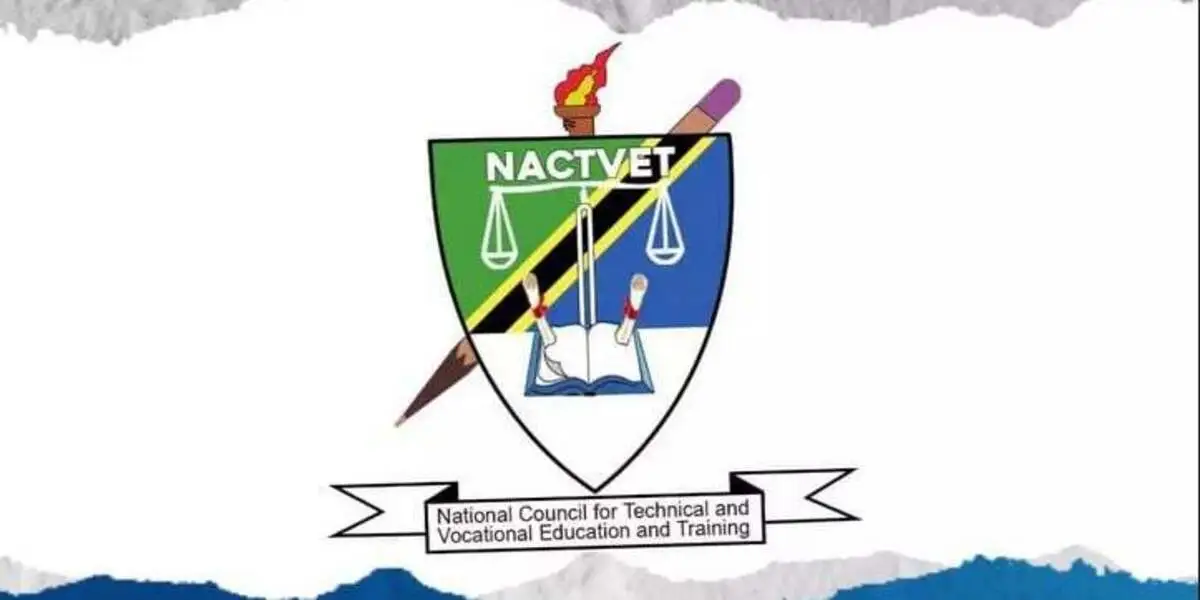Construction terminologies are the specialized words and phrases used to describe and communicate Engineers about the building process.
Construction projects are taking place in your local communities and around the world. As you compete for jobs and begin work on projects, you’ll be meeting general contractors, subcontractors, engineers, and architects.
During meetings or when documents are shared, you might come across certain construction terminologies/ construction site terminologies and acronyms that you’re not familiar with.
If you don’t know these terms, you’ll be unable to keep up with the conversation, putting you at a disadvantage.
Not being able to keep up with a conversation, especially when you’re negotiating a contract, will hurt your bottom line.
Moreover, you simply don’t have the time to waste hours trying to Google terms–time better spent on your construction tasks.
But no worries–we’ve got you covered! We’ve gathered together the 100 most common words used in the industry and placed them in a list so you can easily look up and review their meanings.
In this glossary of building terms, we’ve included words, phrases, and acronyms that cover building structures, architectural plans, bidding phases, and contracts.
And if you don’t find a word you’re looking for, leave a comment and let us know about a word you think we should include in our next version.
Also Read: What do an Engineer do? | All You Need To Know
Construction Terminologies
Let us start:
1. All-In Rate
Total expenses for a project that includes all direct and indirect costs.
2. Architect-in-Record
The name of the architectural company that is listed on the issued permits, yet who may not do the design for the construction project.
3. ASTM (American Society of Testing Materials)
An International standards organization that offers technical standards for products, materials, systems, and services in a range of industries, including construction standards.
4. Best Value Method
A construction procurement method where contractors are awarded the bid based on prices and quality measurements from previous work performance.
5. Bid
This is a price proposal typically based on the design specifications and documents.
6. Bid Package
Construction documents where the pertinent portions of information are placed into a suitable bidding package by the contractor.
7. Bid-Hit Ratio
Ratio involving where you have successfully bid on a construction project.
8. Bid Package
Construction documents where the pertinent information is placed into a bidding package by the contractor.
9. Bid Selection
The process of examining and comparing contractors’ bids to select the right one based on price and services provided.
10. Bid Solicitation
Notifying potential bidders regarding a bid opportunity as it may be a request to submit a bid or obtain a request for proposals.
11. BIM (Building Information Modeling)
A 3-D modeling process that features the details of the building.
Also Read: Shallow Foundations For Medium Structures: A Quick Guide
12. Blocking
A construction technique to join, fill, or reinforce the building structure.
13. Blueprints
A 2-dimensional technical drawing that has all of the project’s details.
14. BOQ (Bill of Quantities)
An itemized contract document featuring all the materials and workmanship used to help price out the project.
15. Box Crib
This is a temporary structure used to add support or reinforce heavy objects that are used during the construction process.
16. Building Engineer
An expert in design, construction, and assessment technologies.
17. CAD (computer-aided design)
These are Architecture software used to create detailed building models.
18. Cant
An angled surface or line that cuts a corner off.
19. Catastrophic Failure
An accident in the construction process that causes severe damage that creates a permanent loss.
20. Change Order
A written document that modifies or changes the project’s plans, price, or specifications in the construction contract.
21. Concrete Cover
The reinforced concrete cover is the least distance between the outer surface and the reinforcement.
22. Concrete Slab
A horizontal platform is used to construct the building’s ceiling or floor.
23. Construction Build Out
Changing or modifying the existing commercial space to make it usable for business functions.
24. Construction Drawings
The final preconstruction drawings of the whole building.
Also Read: What is Research Methodology?: The Ultimate Engineer’s Guide
25. Construction Estimate
Forecasting the construction costs for the building as it may be used to determine the feasibility of the project.
26. Construction Management at Risk (CMAR)
Project delivery method where the construction manager commits to delivering the project within the guaranteed maximum price.
27. Construction Management Software
An application used by construction managers to efficiently run the project as it features accounting, documentation, and team workloads.
28. Contract Formation
Is a contract in the construction industry that indicates the offer and the acceptance between to agreeing parties as the agreement is signed.
29. Cost Codes
These are Codes used to track budgets and expenses of labor activities.
30. Cost-Plus Contract
A contract where the contractor is paid for all of their allowed expenses as well as an additional profit payment.
31. Course
Concrete blocks, stones, or bricks in a continuous masonry row.
32. Cross Bracing
These are reinforcements in an X-shape that enhance a structure’s durability.
33. Daily Report
A report that documents materials installed, crew information, safety incidents, and work completed as the document is created by the foreman at the end of each day.
34. Damp Proofing
A procedure to keep the drywall interior dry and prevent moisture absorption.
Also Read: Plant Maintenance: A Quick Guide to Get Started Quickly
35. Design-Bid-Build
A traditional project delivery method where the owner or agency contracts separate firms to design and construct the building.
36. Design-Build
A project delivery method where the owner or agency hires a single firm or company to handle both the design and construction of the building.
37. Diagrid
Structure reinforcement technique using steel beams placed in diagonal grids.
38. Encasement
The encasing of underground pipes in concrete or when encasing hazardous materials that have been installed.
39. Falsework
A temporary structure is used to support an arch or bridge during the construction or repair process.
40. Field Measure
This is the Measurements taken inside the structure that do not rely on the blueprints.
41. Field Work Order
This is the general contractor’s document given to the subcontractor regarding the completion of work that is not included in the original scope of the project.
42. Floor Plan
This Drawing of the building’s layout provides details of each room space from an above view.
43. Foreman
In Construction terminologies, this is the leading supervisor at the construction site who is in charge of the work crews. He ensures workers perform daily tasks based on established schedules while creating documents regarding completed work.
44. Elevation Drawing
A drawing of a structure that shows the front or side of the building’s facades; it is a first-angle projection.
45. General Contractor
Is the main contractor for the building construction. Their main responsibility is the oversight of the project as they manage subcontractors, handle scheduling, and monitor the budget.
46. GMP (Guaranteed Maximum Price)
A contract where the contractor is paid for the actual costs that are incurred in addition to a fixed fee that has a price ceiling cap.
47. HVAC (Heating, Ventilation, and Air Conditioning)
Abbreviation used to signify the heating, ventilation, and cooling structures and systems of the building.
48. IFB (Invitation for Bid)
This is the request given to contractors for them to submit a project proposal regarding their provided services and products.
49. Integrated Labor Delivery
A construction model where the project labor is brought in at the design phase as subcontractors perform roughly 80% to 100% of the labor.
50. Integrated Project Delivery (IPD)
A construction model where a single multi-party contract is established between the owner, architect, and builder. The contract outlines that all stakeholders will share both the risks and incentives of the project.
51. Job Costing
Is the accounting method used to track construction work that is completed and measures whether the amount of activity aligns with the project budget.
52. Joint
A construction interface between two separate building elements that do not have a physical connection to each other but may overlap or align with the other element.
53. Joist
Horizontal elements that are connected to beams perpendicularly to provide load transfer functions.
54. Lean Construction
A construction methodology where all stakeholders share relationships and goals to manage the project to reduce waste while maximizing the project’s value.
55. Lease-leaseback
In Construction terminologies, this is a project delivery method where a school will lease a site to a contractor who will construct a building to be used by the school. The contractor will then lease the constructed building back to the school. At the end of the lease, the title of the building would be vested in the school.
56. Lien
A property claim is made by the contractor against the owner when they are not paid for the completed work.
57. Lift Slab Construction
Construction method where concrete slabs are cast on the ground level and then are lifted into place using hydraulic jacks.
58. Low Bid Procurement
A construction bedding method where the lowest bid is automatically accepted and awarded the job.
59. Lump Sum Contracts
A contract where a single price is quoted for the entire construction project.
60. Moling
This is a pneumatically-driven device inserted into the ground to create holes for construction elements such as pipes and heat pump systems.
61. Monocrete Construction
A construction method that uses precast concrete panels that are bolted together to make concrete structures.
62. Negotiated Procurement
A government procurement method where a contractor is chosen without formal price competition or formal advertising.
63. Pay Applications
A construction document that details how the contractor will be paid.
64. Performance Gap
A performance gap is an instance where the expected work progress does not match the results that are given.
65. Precast Concrete
These Concrete elements created offsite and are transported to the construction site for final assembly.
66. Project Manager
The project manager handles the entire management of the construction project. They oversee project deliverables, schedules, and budgets.
67. Public-Private-Partnership
In Construction terminologies, this is a project delivery method where a government agency and a private sector company collaborate to fund, build, and maintain construction projects as the private generates income from the project.
68. Punch List
A document listing construction work that does not meet the customer’s specifications. It is made at the end of the project as the contractor needs to complete the job to receive the payment.
69. Purchase Orders (PO)
In construction, a purchase order is a document from the buyer that indicates their intent to purchase services and products from the seller, such as a supplier.
70. Purlin
A horizontal and longitudinal beam is used on the roof structure to support the rafters.
71. RFI (Request for Information)
This preliminary document contains general information about the capabilities provided by potential vendors or suppliers.
72. RFP (Request for Proposal)
A document request to vendors to obtain an overview of their costs and offerings for specific services.
73. RFQ (Request for Quote)
A document featuring predetermined specifications for the project as it requests the vendor’s costs to fulfill these specifications.
74. Rim Joist
In flooring, a rim joist is attached to the end of the main joists to give lateral support.
75. RTT (Request for Tender)
A formal invitation to vendors to submit their bid to supply products and services to the construction project.
76. Rubblization
During the construction project, unwanted concrete is broken down into small pieces that are used in the base for new surfaces.
77. Schedule of Values
A project’s work item list corresponds to the items to their value as the list represents the entire amount of the work project.
78. Scope Creep
Scope creep involves continuous changes and modifications are made or when the work grows uncontrollably beyond the original scope of the project.
Also Read: Building construction | Types of Building construction
79. Scope of Work (SOW)
A detail in the agreement outlining the work that will be performed for the project.
80. Section Drawing
A drawing that shows the building’s view as if cut on a vertical plane.
81. Shiplap
Wood panels on the sides of buildings, barns, and other structures.
82. Shop Drawings
A contractor’s drawings that detail the fabrication of components.
83. Shoring
In Construction terminologies, this is a construction method that uses wood or metal props to support the structure while it is worked on.
84. Soil Stockpile
A pile of soil is created when bulldozers excavate the site as the soil may later be used for grading.
85. Soul Source Procurement
A procurement method where only one contractor is selected without a competitive process to fulfill all the project’s requirements.
86. Specifications
The specifications provide details regarding the materials and work quality desired for the building design.
87. Subcontract
In Construction terminologies, this is an agreement made with the contractor and subcontractor that outlines the specific work services for the project.
88. Subcontractor
The subcontractor specializes in a specific construction or building trade, such as electrical or plumbing. They are contract workers who are hired by the general contractor.
89. Submittals
Material data, shop drawings, and product data for architects and engineers so they can verify that the correct products were installed.
90. Superstructure
A structure that is built on top of another structure.
91. Takeoff
A document that lists the types and quantities of materials that will be required for the construction project.
92. Target Value Design
This design method involves all key stakeholders — including the owner, subcontractors, designers, and contractors — who will design the construction project to meet the owner’s goals and budget.
93. Tender
A contractor’s or supplier’s submission response about the supplies and services that they can offer to the project when receiving a bid invitation.
94. Tie
These are Construction elements used to tie separate materials together inside cavity walls.
95. Time and Materials Contracts
This is a contract method where the contractor is paid for the actual costs, which include time and materials.
96. Underpinning
Construction technique to strengthen the foundation of an existing structure with the use of beams, concrete, or base pining.
97. Unit Price Contracts
A contract where the contractor is paid based on the estimated quantity of items for the project and their unit prices.
98. Virtual Design and Construction (VDC)
In Construction terminologies, this is all about the multi-disciplinary project models which can include the analysis model, visualizations, costs, and engineering modeling.
99: Voided Biaxial Slab
Concrete blocks with voids inside maintain their strength and durability while using less concrete.
100. Zoning
Government regulations dictate how property areas can be used.
Wrapping Up
Right now, by understanding the above Construction Terminologies and acronyms, you can further understand the meaning of certain construction methods, projects, and contracts.
You may also hear many of these terms used in other industries such as engineering, architecture, and cost estimating.
We hope this article helped you learn about Construction Terminologies You Should Know. You may also want to learn about Cladding: Types and Considerations, Top Cement Companies in India, The Best Engineering Universities in the World, and Best Engineering Universities in the USA.
If you liked this article, please Join WebsiteForEngineers on Telegram, and you can also find us on Pinterest, Twitter, and Facebook.













